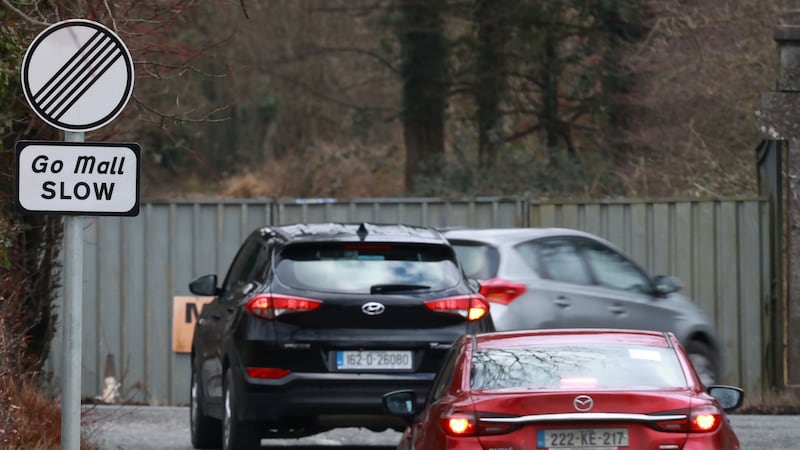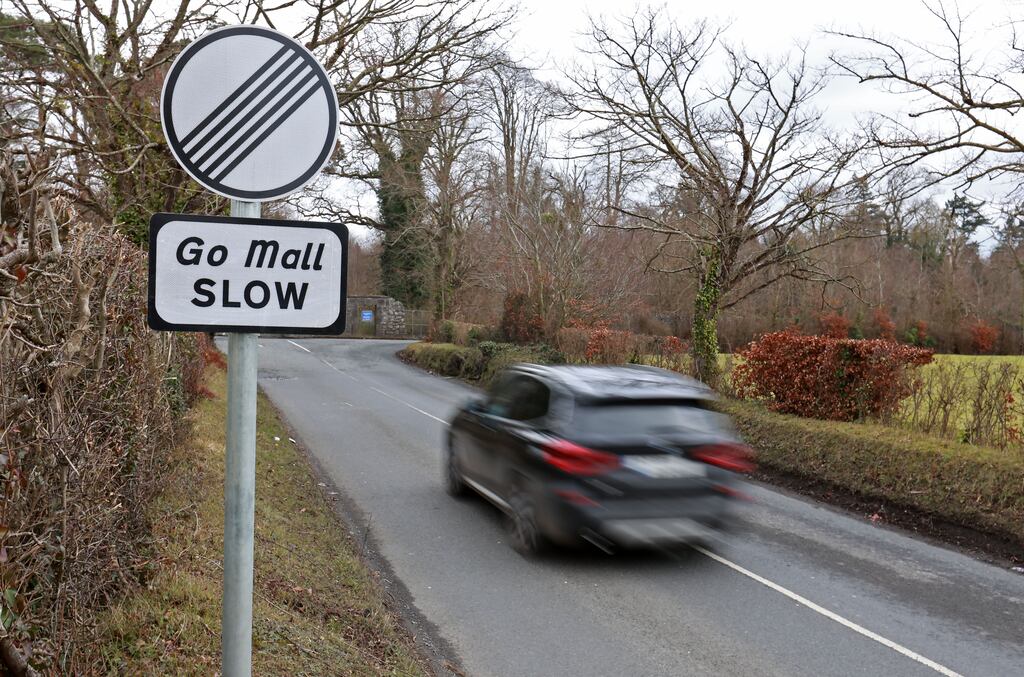Could the new lower speed limits save you money? They can if you stick to them. Driving faster than is legal for the road you are using is not just dangerous, it also wastes fuel. Don’t take my word for it – ask a mathematician.
“Driving at lower speeds will almost always save you fuel,” says Prof Turlough Downes, director of the Centre of Astrophysics and Relativity at DCU.
If the argument that driving more slowly will save lives doesn’t slow you down, maybe saving more than €20 at the pumps at each refill will. If it costs €70 to fill your tank and you do that four times a month, that’s a saving of more than €80. Your speed is costing you money.
What’s changing?
Speed limit reductions on most of the State’s local roads are now in force. Local roads link towns and villages and more rural areas – expect bends, dips, bridges, livestock crossings, tractors and weekend cyclists. The limit here has dropped from 80km/h to 60km/h.
READ MORE
On national secondary roads, which run between sizeable towns, the default speed limit will reduce from 100km/h to 80km/h later this year. These tend to be good quality, two-way roads with an N prefix – such as the N11, the N59 etc.
Speed limits are reducing in cities, town centres and housing estates too. You’ll find roundabouts, pedestrian crossings, speed bumps, school zones and playing children on this terrain and limits will drop from 50km/h to 30km/h later this year.
Where are the savings?
The two things to think about when it comes to speed and fuel efficiency are braking and air resistance. If you want to spend less on fuel, then drive with this in mind.
First to braking. “Every time you brake, you slow your car down, that means you are taking energy away from your car,” says Prof Downes. A lot of this energy is turned into heat in your brake pads, says Downes.
“If you accelerate, that’s burning fuel to speed up the car. If you brake shortly afterwards, then really all you’ve done is burn fuel to heat up and wear out your brake pads,” he says.
Here comes the maths. The amount of energy you give to your car to get it to a certain speed goes like the ‘square’ of the speed, says Downes.
“If you accelerate from 0 to 30km/h, you burn a certain amount of fuel to get the car to that speed. If you accelerate from 0 to 60km/h, you burn four times the amount of fuel you would burn to get to 30km/h,” he says.
By accelerating from 0 to 90km/h, you burn nine times the amount of fuel.
“So if you are doing a lot of ‘start and stop’ in your journey, you are certainly a lot better off going as slow as you can bear,” says Downes. “Basically, try to drive as if you aren’t going to use your brakes, and that means going pretty slowly.”

Motorists who drive on country roads by accelerating on straight stretches, braking rapidly on bends before speeding up again could be burning four to nine times the amount of fuel as someone driving a slower, more even pace.
By sticking to the new 60km/h limit on local roads, or lower, you are wasting far less fuel on frequent deceleration.
In built-up areas, it’s the same thing. The driver who, arriving at roundabouts, pedestrian crossings and junctions at speed, has to brake hard, has probably skipped physics class and maths class. All that speeding up and slowing down is guzzling fuel and money.
Service stations love them as they spend a whole lot more time at the pumps.
The new limits in cities, town centres and housing estates will see speeds drop from 50km/h to 30km/h later this year. Keep to the new limits, or drive even more slowly, and you’ll keep more money in your pocket.
The other factor that drives up your fuel costs is air resistance. There’s another bit of maths here.
“In the jargon, we say air resistance goes like the square of your speed,” says Prof Downes. “So if you’re doing 120km/h, then you are experiencing four times as much air resistance than if you are going at 60km/h,” he says.

“Landing Google really put us on the map”: Karl Brophy on the success and sale of Red Flag
The impact of air resistance on energy is why Tour de France cyclists form a peloton – doing so enables riders to create zones of reduced air pressure enabling them to conserve energy.
“Once you are going at around 80km/h, about half of the fuel you are burning is being burned to push the air out of the way of the car as it moves down the road,” says Downes.
“As you increase your speed above 80km/h, the air resistance actually becomes the biggest factor in your fuel usage.”
“If you are moving along at 100km/h, then you are burning just under 30 per cent more fuel per kilometre than you are if you are moving at 80km/h,” he says.
Keep to the new 80km/h speed limit on national secondary roads and you could save a quarter to a third of a tank of fuel compared with driving at 100km/h, he says. So if a full tank costs you €70, you can save about €23.
The new reduced speed limit should improve fuel efficiency in urban areas too, he says. “This won’t be due to air resistance, which for cars isn’t as important at these low speeds. The savings will come from not accelerating and de-accelerating so much.”
Time and travel
There can be plenty of variables on journeys, but if you are driving 80km/h instead of 100km/h, it can take about 20 per cent more time to get to your destination. A one-hour journey could take 12 minutes longer, but you will have saved money and caused less pollution.
“Generally, burning less fuel means lower emissions – certainly of carbon dioxide,” says Downes. “Presuming you are using your gears reasonably well, these speed limits will reduce emissions if people stick to them. They will also reduce wear on your tyres.”
“Depending on the road you are on, continually accelerating and decelerating doesn’t actually increase your average speed all that much, so it doesn’t save you time. All you are doing is burning fuel to heat and wear out your brake pads.”
You can contact us at OnTheMoney@irishtimes.com with personal finance questions you would like to see us address. If you missed last week’s newsletter, you can read it here.
















